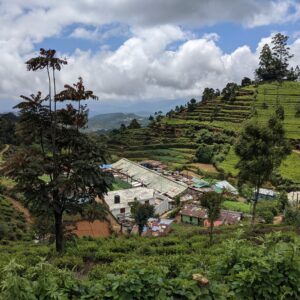In the 1980s, the snowline was visible at 4,900 mt at the end of summer. It has now moved up to 5,200 mt in 2006 marking loss of ice accumulation in the lower heights.
“Himalayan glaciers are not in good health,” Anil Kulkarni who studies glaciers at the Space Department’s Satellite Application Centre in Ahmedabad told Deccan Herald.
Many glaciers were without accumulation area and might experience terminal retreat due to lack of new ice formation, he said.
There are no systemic studies on the snowline shift in the Himalayas. Kulkarni’s research shows that in Baspa glacier, snow line was visible at 4,900 mt in 1976. It went up to 5,200 mt in 2006.
Situation may improve
Snow line was visible at about 5,000 mt in another Himalayan glacier Chhota Sigri around 1978-79. In 2005, it has gone up to 5,350 mt though computer models say that the situation may improve a little bit in the next two years.
Snowline determines how much of snow will be converted into ice to maintain a positive mass balance for the glaciers. Positive mass balance indicates the glacier’s advancement while negative means retreat.
Retreat has been reported in 1,317 Himalayan glaciers spanning across 11 basins suggest 16 per cent loss in area from 1962.
Fragmentation has come out as a major problem. The number of glaciers increased due to fragmentation but the total area covered by glacier ice is reduced.
The Chenab basin is a perfect example where hundreds of tiny glaciers were created by breaking away the big ones. The phenomenon is seen in other glaciers, too.
Fragmentation
“Fragmentation has a profound impact on glacial retreat. It effectively reduces depth, and response time and accelerates retreat,” Kulkarni said, presenting his data at a climate change conference here last week.
Large-scale melting and retreat of seasonal snow were observed in basins like Ravi throughout the winter.
In high altitude basins like Baspa and Bhaga, the massive retreat was seen in the beginning of winter as well.
Parbati, Sara Umaga, Gangotri, Dokriani Bamako, Hamta, Samudra Tapu and Pindari are some of the fast retreating glaciers in the Himalayas. Most of the loss has taken place in the last three decades.
“Increase in temperature and decrease in snowfall are the causative factors. But we cannot say if temperature hike and snow fall drop are related to climate change,” Kurkarni said.
Snow depletion curve in the Beas basin suggests early and rapid melting of snow cover. The average stream runoff of the Baspa river in December was increased by 75 per cent from 1970 signifying an increase in glacier melt.



